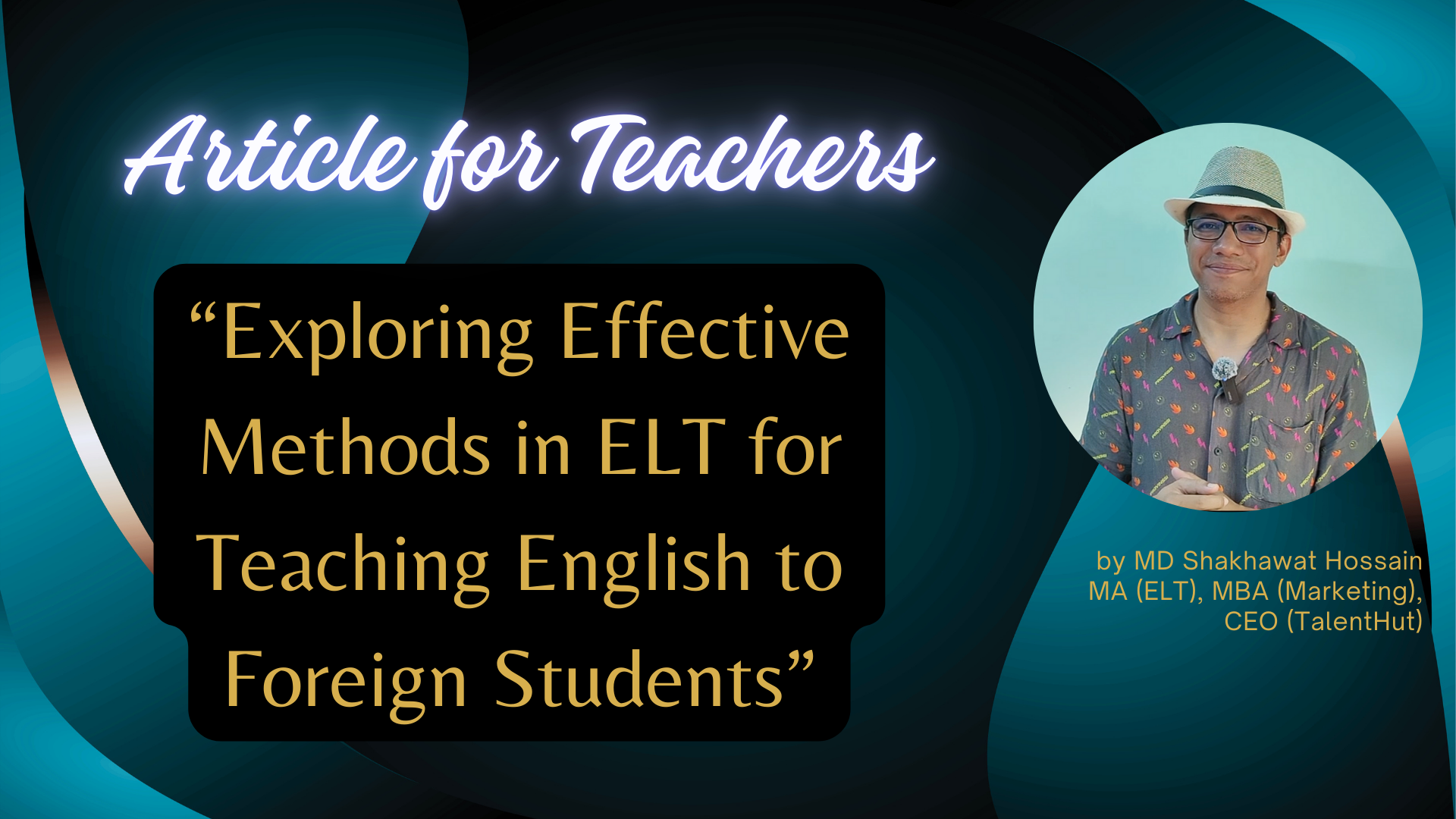Exploring Effective Methods in ELT for Teaching English to Foreign Students
Methods Used in English Language Teaching (ELT) for foreign students
Teaching English as a Foreign Language (EFL) is an ever-evolving field, encompassing various methodologies to cater to the diverse needs of learners. Understanding and employing the right methods in English Language Teaching (ELT) is crucial for academic purposes, professional development, or personal enrichment. Here, we explore some of the most effective methods in ELT, providing practical examples of how to use them in real-world settings, specifically highlighting the offerings of talenthut, talenthutbd, and talenthutielts.
1. The Grammar-Translation Method (GTM)
Overview: This traditional method focuses on translating sentences between the target language and the native language. It emphasizes grammar rules and vocabulary lists.
Practical Application: While this method may seem outdated, it can be effective for students preparing for standardized tests like IELTS. For example, talenthutielts can offer online courses where complex grammar rules are broken down and translated into the student’s native language, ensuring a deep understanding of the structures needed for the writing and reading sections of the IELTS exam.
2. The Direct Method (DM)
Overview: Also known as the Natural Method, it emphasizes direct immersion in the target language, avoiding the use of the student’s native language.
Practical Application: In an ESL setting, talenthutbd can create an immersive environment where only English is spoken during classes. Teachers can use visual aids, realia, and interactive activities to help students associate words with their meanings directly. For instance, a lesson on daily routines could involve role-playing activities where students practice vocabulary and phrases in real-life scenarios.
3. The Audio-Lingual Method (ALM)
Overview: This method is based on behaviourist theory and involves repetition and drills to teach language patterns.
Practical Application: For online ESL courses offered by talenthut, the Audio-Lingual Method can be highly effective. Teachers can design interactive drills that students can practice repeatedly, focusing on pronunciation and intonation. Using talenthut’s online platform, students can record their responses and receive instant feedback, helping them to internalize correct language patterns.
4. Communicative Language Teaching (CLT)
Overview: CLT emphasizes interaction as both the means and the ultimate goal of learning a language. It focuses on functional language use and real communication.
Practical Application: In talenthutielts courses, CLT can be used to simulate real-life communication scenarios. For example, students can participate in group discussions, debates, or role-plays that mirror the speaking section of the IELTS exam. This method not only improves their fluency but also builds their confidence in using English in everyday situations.
5. Task-Based Language Teaching (TBLT)
Overview: TBLT involves the use of tasks as the central unit of planning and instruction in language teaching.
Practical Application: Talenthutbd can incorporate TBLT in their curriculum by designing tasks that require students to use English to complete specific objectives. For instance, students can be asked to create a travel itinerary, conduct a survey, or solve a problem in English. These tasks encourage practical use of the language, promoting both fluency and accuracy.
6. Total Physical Response (TPR)
Overview: TPR is based on the coordination of language and physical movement. It can be particularly effective for young learners and beginners.
Practical Application: In talenthut’s beginner ESL classes, teachers can use TPR to teach vocabulary related to actions and commands. For example, during a lesson on classroom instructions, teachers can give commands like “stand up,” “sit down,” or “open your book,” and students respond physically. This method helps in reinforcing vocabulary through kinesthetic learning.
7. The Silent Way
Overview: This method encourages student autonomy and active learning by minimizing teacher talk and maximizing student output.
Practical Application: In talenthutbd’s advanced ESL classes, teachers can employ the Silent Way by using tools like Cuisenaire rods or color-coded pronunciation charts. Students work together to solve language problems, promoting collaboration and critical thinking. This method is particularly effective for developing higher-order language skills.
Integrating various methods in ELT ensures a comprehensive and effective approach to teaching English to foreign students. Talenthut, talenthutbd, and talenthutielts offer tailored courses that leverage these methodologies to meet the unique needs of their learners. By combining traditional and modern techniques, they provide a well-rounded education that prepares students for real-world communication and academic success.
- Author
CEO (TalentHut), MA (ELT), MBA (Marketing)
Teacher Trainer & Career Coach.
For contact: [email protected]

